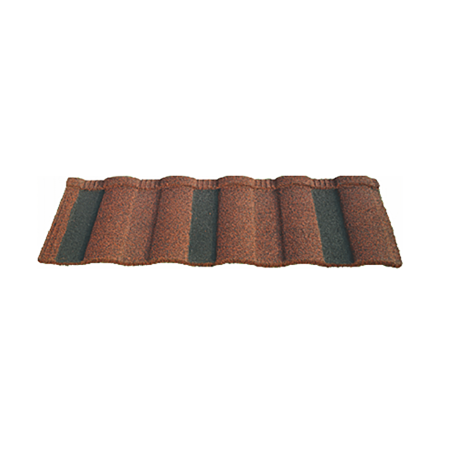
Oct . 22, 2024 11:12 Back to list
Exploring the Benefits of Clay Valley Roof Tiles for Your Home
The Enduring Legacy of Clay Valley Roof Tiles
Roofing materials have evolved significantly over the centuries, but few have held their ground as well as clay roof tiles. Among them, clay valley roof tiles stand out, not only for their aesthetic appeal but also for their durability and functionality. This article explores the significance of clay valley roof tiles, their historical background, advantages, installation methods, and maintenance practices.
Historical Background
Clay roof tiles have been used for thousands of years, with evidence of their use dating back to ancient civilizations in China, Rome, and Greece. These cultures recognized the benefits of clay due to its abundant availability and excellent thermal properties. As the technology and art of tile-making evolved, different regions developed unique styles and techniques that reflected their culture and environment. Clays from various locales have their own distinct properties, influencing the color, texture, and longevity of the finished product.
Clay valley roof tiles, specifically, refer to the tiles used in the valley sections of a roof—the part where two planes meet, creating a trough that channels rainwater. These tiles are indispensable for effective water drainage, ensuring that rainwater flows smoothly off the roof without causing leaks or damage.
Advantages of Clay Valley Roof Tiles
1. Durability One of the most compelling reasons to choose clay roof tiles is their robustness. When properly installed and maintained, clay tiles can last 50 years or more. They are resistant to rot, insects, and extreme weather conditions, making them an ideal choice for a variety of climates.
2. Aesthetic Appeal Clay valley roof tiles come in various colors, shapes, and finishes, allowing homeowners to select options that complement their architectural style. Whether traditional, modern, or Mediterranean, clay tiles can enhance the visual appeal of any home.
3. Energy Efficiency Clay tiles are excellent insulators. They keep homes cool in the summer and warm in the winter, potentially reducing heating and cooling costs. The thermal properties of clay also help manage indoor temperature fluctuations, providing added comfort.
4. Sustainability Clay is a natural material that is biodegradable and recyclable. The production of clay tiles involves firing local clay at high temperatures, resulting in an environmentally friendly product with a low carbon footprint compared to synthetic materials.
5. Fire Resistance Clay tiles are non-combustible, providing an additional layer of safety against fire. This feature can not only save lives but may also lower insurance premiums for homeowners.
Installation of Clay Valley Roof Tiles
clay valley roof tiles

Installing clay valley roof tiles requires meticulous attention to detail and expertise. The installation process usually begins with properly preparing the roof structure. It's vital to ensure that the roof is clean and free of debris, as any imperfections can lead to future problems.
1. Underlayment A waterproof underlayment is typically installed over the roof deck before placing the clay tiles. This barrier is essential for preventing water infiltration.
2. Valley Framework Framework for the valley is laid out, ensuring that the angle and direction will guide water towards the gutters.
3. Tile Placement Tiles are carefully laid in overlapping rows along the valley, ensuring that water will flow down without trapping debris. Each piece is aligned correctly for maximum effectiveness, covering the underlayment.
4. Finishing Touches Ridge caps or additional tiles are placed on the roof’s peak to ensure a complete seal and enhance the overall appearance.
Maintenance of Clay Valley Roof Tiles
While clay valley roof tiles are low-maintenance by nature, regular inspections and maintenance are crucial to ensure longevity. Homeowners should
1. Inspect for Damage Regularly check for cracked, broken, or missing tiles and replace them promptly to prevent leaks.
2. Clean Gutters and Valleys Ensure that gutters and valleys are free of leaves and debris to promote proper water flow and prevent clogging.
3. Check for Algae and Moss In damp climates, algae and moss can grow on roof tiles. Using a gentle solution to clean these off can help maintain aesthetics and prevent potential damage.
In conclusion, clay valley roof tiles exemplify a marriage of practicality and beauty. Their historical significance, combined with contemporary benefits, makes them a popular choice for many homeowners. By understanding the advantages, installation, and maintenance of these tiles, one can appreciate their role as both a functional and decorative element in roofing. Embracing clay valley roof tiles not only contributes to the aesthetic allure of a home but also ensures long-term durability and efficiency, just as they have for centuries.
-
Moonlight White HIREFLE Granules with GPT-4 Turbo
NewsAug.02,2025
-
Premium Round Asphalt Shingles: Durable & Elegant Roofing
NewsAug.01,2025
-
Eco-Friendly Clay Tiles | AI-Enhanced Durability
NewsJul.31,2025
-
Durable Shingle Granules for Premium Roofs
NewsJul.31,2025
-
Stone Coated Metal Roof Tile-Roman Tile for Durable Roofing Solutions
NewsJul.30,2025
-
Stone Coated Metal Roof Tile-Wood Grain Tile for Durable Roofing
NewsJul.30,2025







